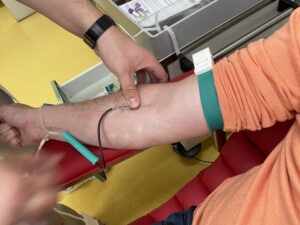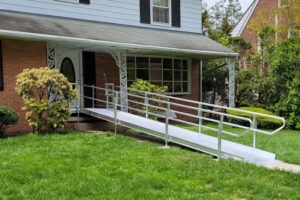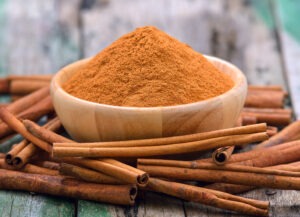
Air travel has been tricky at best over the last couple of years, so many people have turned back to the classic American getaway: a road trip. It’s an ideal way to explore your own backyard on a whim for a memorable vacation.
We took five of the country’s major hubs and found four-weekend getaway ideas for each, all of which are easily accessible detours. Read on for our picks for the best weekend getaways around the U.S., along with tips for where to stay and what to do while you’re there.
Catalina Island, California
Take the one-hour journey to this island 22 miles or so off the coast of California via the Catalina Express ferry, which departs from San Pedro, Long Beach, or Dana Point daily. Once you’re here, biking and walking are the main modes of transportation (or you can rent a golf cart for longer drives). Catalina Island is a startling contrast to the mainland, with more than a whiff of East Coast hideouts like Nantucket.
Start at the quaint main town, Avalon, and gorge on seafood that’s barely minutes from the water—try Bluewater Grill, right on the dock. Then head inland to El Rancho Escondido, which earned acclaim for its Arabian horse-breeding program. Though the ponies are gone now and much of the land has been deeded over to vines, where Rusack Vineyards focuses on Chardonnay, Pinot Noir, and Zinfandel. Outdoorsy types can hike the entire length of the 38.5-mile Trans Catalina Trail in about four days, too, with campgrounds for overnighting along the route. The Bellanca Hotel in Avalon is the plushest perch if you’d rather have someone else make your bed—or sleep in a bed, period.
Palm Springs, California
Around 50 percent of the locals in this Coachella Valley hub identify as LGBTQ+, adding appeal for any open-minded, easy-going visitor. The main drag of gay bars, along Arenas Road, is a rollicking night out for anyone—and just 90 mins from Los Angeles, as long as you avoid the peak times for the drive, like Friday evenings. Come here to explore the design style which was popular when Palm Springs was in its heyday. Midcentury modernism is celebrated everywhere, from antique stores specializing in sleek Danish sofas to the Modernism Museum, which includes installations like a 1950s-era RV, plus a gift shop (of course). Dive deeper into the history of this style via a three-hour tour with architectural historian and author Michael Stern, which includes the chance to visit private homes. Among the countless hotels decked out in midcentury-modern stylings for an overnight, the Parker Palm Springs remains the standout—a riot of color and witty touches from designer Jonathan Adler.
Paso Robles, California
Just 20 years ago, there were about 50 wineries in and around this charming small town just over three hours from LA; now there are more than 300, and the area is becoming more widely known for its fine Pinot Noirs and Zinfandels. The self-guided tour run by the Paso Wine Country Alliance is the quickest way to zip between vineyards, but it’s worth hiring local guide Coy Barnes, aka the Wine Wrangler, to drive you for the day if you’re keen to quaff at every tasting room. Some rooms at the Paso Robles Inn have hot tubs on their balconies (a nod to the town’s origins as a spa center) that are fed by water piped in from nearby hot springs.
San Diego, California
Beaches and green spaces are the defining assets of San Diego, just under a two-hour drive south of LA. There’s the 1,750-acre Torrey Pines State Reserve—kayak through the wetlands for an up-close view—and a namesake golf course with two 18-hole championship courses perched on a cliff overlooking the Pacific; stay at the Arts & Crafts-style Lodge at Torrey Pines, right by the 18th green. San Diego has 75 miles of coastline, featuring plenty of noteworthy beaches, most of them studded with surfers. Hit Moonlight State Beach if you want to head out on the water, rent fishing gear, or snap a shot with the iconic Hotel Del Coronado as a backdrop from Coronado Beach. And even if San Diego has 24/7 beach weather, don’t forget: This is the Christmas Capital of America.
Southwest Michigan
Saugatuck and its surroundings in Southwest Michigan have recently attracted newcomers due to a focus on the state’s extraordinary produce (Michigan is second only to California in agricultural diversity). Drive two and a half hours to eat at the delicious, diner-like Pennyroyal Cafe & Provisions from chef Melissa Corey, or taste some of the estate-grown vintages at Modales Wines. Work off your meal with a bracing hike to the top of Mount Baldhead for spectacular views. You’ll find all that in this corner of Michigan, plus the perennial bonus of gleaming beaches, charming all-American coastal towns, and the best sundowner spots in the state overlooking the lush waters of Lake Michigan.
Wisconsin Dells, Wisconsin
It might be three hours north of the city, but a trip here is like stepping decades into the past for a miles-long strip of world-class water parks. The Dells emerged as a family-friendly destination in the 1950s and has changed little since then. The best-known fun fest is the Kalahari, a resort with Master Blaster uphill water coasters plus an outdoor lazy river; but purists vouch for nearby Noah’s Ark, which boasts the largest number of water slides in the area. There are outdoorsy options for an adrenaline-powered weekend, too, like the six-acre, zip-line-filled Chula Vista Resort park. Just make sure to save room for some cheese curds—the best come from Carr Valley.
Lake Geneva, Wisconsin
Just 90 minutes north of Chicago, this resort town is the Midwest’s answer to the Hamptons or Newport, made famous by the iconic families that helped build the Windy City (think Wrigley and Sears). The waterfront offers public access for more than 20 miles, thanks to an early treaty that ring-fenced the Shore Path from any development. Otherwise, expect ritzy Gilded Age mansions and over-the-top hotels like the magnificent Queen Anne-style Black Point Estate and Gardens, now a museum, or the turreted Baker House, ranked one of the town’s best hotels. Don’t assume it’s solely a warm-weather destination, though: Winterfest in January and February is a charming, less-trafficked option than midsummer.
Door County, Wisconsin
Much like Cape Cod curls into the Atlantic, this 75-mile peninsula juts into Lake Michigan like a raised finger, and it shares much with its New England counterpart. First emerging as an artsy summer colony, it has sandy, family-friendly beaches—more than 50 public ones—and 300 miles of shoreline. Come to Door County to amble around its galleries, or hike around the 14 miles of trails quilting its eastern tip in Whitefish Dunes. Make this a long weekend, as it’s almost a four-hour drive from Chicago, and don’t leave without making a pilgrimage to the Swedish restaurant Al Johnson’s, famous for the herd of goats grazing on its grassy roof.
Boonsboro, Maryland
A little over an hour northwest of Washington, D.C., Boonsboro combines natural wonders with a sobering role in American history. Explore the stalactite-crusted Crystal Grottoes here—the Fairyland cave’s red tinge is thanks to iron oxide—or go whitewater rafting and tubing in the waters near Harpers Ferry. Then squeeze in a trip to the site of Antietam, the bloodiest battle on U.S. soil where 23,000 Civil War soldiers were killed or wounded within just 12 hours of fighting in 1862. Planning a romantic weekend? Nowhere better to overnight than Inn Boonsboro, owned by novelist Nora Roberts, where each of the eight rooms is named after a fictional couple like The Princess Bride’s Westley and Buttercup.
Alexandria, Virginia
This historic town still feels like a getaway and consistently ranks among the top five small cities in the country. It’s easy to see why: historic architecture and cobbled streets are a glimpse back past the American Revolution to European settlers’ earliest days. Board the replica 18th-century, 110-foot sloop Providence, a Pirates of the Caribbean prop now moored here as a museum, or head to the Del Ray neighborhood for an assortment of street art that shows the city isn’t simply resting on the past. Stay at the Alexandrian, an Autograph Collection hotel right in the center of Old Town that overlooks the river from the National Harbor.
Cape Hatteras, North Carolina
Cape Hatteras is still one of the best weekend getaways from D.C., thanks to the astonishing views and bracing air of the Outer Banks. The 70-mile-long National Seashore here was the first in the country and is anchored by the landmark Bodie Island Light Station, the tallest lighthouse in the U.S. with more than 200 stairs. Head to the Graveyard of the Atlantic Museum for a glimpse as to why these waters earned that nickname—more than 600 shipwrecks caused by treacherous, shifting shoals. Then again, with the right captain, you can brave those waters yourself on a fishing charter that can easily reach the Gulf Stream. The choice hotel is the charming Inn on Pamlico Sound; wake up with its seaside view, and you’ll understand how worthwhile it is to splurge on a sound-front room.
Great Smoky Mountains, Tennessee
Yes, it’s an eight-hour drive to reach this ridge, but the jaw-dropping scenery will make the effort more than worthwhile—and we’re not just talking about the sight of a statue of Dolly Parton as you reach the end, erected in her honor in the legend’s hometown of Sevierville.
The Great Smoky Mountains National Park is the most visited in the NPS network (and free to enter, too). It spreads across 500,000 acres in the Appalachian Mountains, straddling two states; the easiest entry point from D.C. is the Sugarlands Visitor Center near Gatlinburg. Once you’re in the park, start walking: there are 800 miles of trails in total, including a portion of the official Appalachian Trail. You can also enjoy a guided tour on horseback operated from several stables dotted around the reserve; just make sure to call ahead and book. The peak times for visiting include leaf-peeping season, of course, plus early summer, when the flame azaleas are in bloom. This is a year-round park, though, with plenty to enjoy even in winter, when the views from high perches like Clingman’s Dome are particularly impressive. In season, you can camp at one of ten different grounds (reserve a spot here) or book a room at one of the hotels in Gatlinburg, which effectively serves as a resort community adjacent to the park.
Cassadaga, Florida
The hub of Volusia County, just east of Orlando and around four hours from Miami, is Cassadaga—a town whose residents will likely know you’re coming. Homes here are occupied by psychics and folks who generally believe in life after death, reincarnation, and the power of the spirits. Come to the Spiritualist Camp and check out the list of mediums and healers taking bookings that day, working on everything from past life regression to aura photography. One standout is Louis Gates, who grew up here as the child of two psychics; ask him about his childhood, as he has intriguing stories about life in Cassadaga, as well as a sixth sense ($50 for a half-hour session). There’s also a hotel in town.
St. Petersburg, Florida
Is there anywhere that captures the essence of Florida more completely than St. Pete? It’s relaxed, rimmed by gorgeous beaches on the Gulf of Mexico, and resolutely determined to let any visitors shuck off their worries within minutes of arriving. If you haven’t decompressed over the four-hour drive, make for Paradise Grille immediately, where you’ll find dinner, ice-cold drinks, and acoustic music. Spend the rest of the day at Honeymoon Island or the Caldesi Island State Parks, two of the area’s best waterfront spots. There’s another side to the city, too: The Dalí Museum, a longtime anchor of the culture scene, was recently joined by the Imagine Museum, which showcases the studio glass movement of the 1960s.
Key West, Florida
The so-called Conch Republic has made its name as a kooky hideaway for America’s eccentrics—it even declared independence from the U.S. for a few days in 1982. It retains that offbeat, end-of-world appeal thanks to enduring sights like BO’s Fish Wagon, a bar on the waterfront that could be mistaken for a junkyard; but the last decade has seen a major upgrade in the accommodations on offer here. Try The Reach, the adult-aimed sister spot to the Waldorf Astoria located next door, which has its own private beach. Walk over to the Bahamian Village, with its ice cream-colored cigar makers’ cottages, and spend a lazy brunch (heck, the whole afternoon) al fresco at Blue Heaven, surrounded by its flock of resident chickens. For those avid readers, don’t forget to stop by Ernest Hemmingway’s house — a now popular walk-through museum.
The Everglades, Florida
It takes barely an hour to hit the entrance of Everglades National Park from Miami, an almost 4 million-acre swampy prairie filled with rare crocodiles and dozens of remarkable birds. Skip the most popular route along the Tamiami Trail, and instead duck in just past Homestead at the Ernest F. Coe Visitor Center entrance, which is the best way to reach Flamingo, the only settlement actually inside the park. From there, it’s a windy, 40-minute drive south to the tip of the Everglades. There are trails en route—Nine Mile Pond is a canoeing trail even newbies can manage—before you hit the 19th-century settlement, named after the pink birds that flock here (likely not actually flamingos, but roseate spoonbills, though that’s not quite as snappy a placename).
Take boat tours of the backcountry from the marina in Flamingo, or book a houseboat to get some sleep and keep exploring the next morning. Just remember to wear long pants and pack industrial-strength bug spray in abundance—the mosquitoes can be a menace here, year-round.
Chickasaw Country, Oklahoma
Drive just two and a half hours and cross state lines to explore one of the most noteworthy Native American areas in the U.S. It was here, in South Central Oklahoma, that the Chickasaw Tribe relocated after being forcibly driven from their ancestral lands near the Lower Mississippi in the 1830s. In the almost 200 years since, they’ve established a new homeland in Chickasaw Country, including an impressive center to learn about their culture, where there are artifacts, stomp dance performances, and historically accurate recreation of a village from the 1700s.
Stay at the Chickasaw-operated Artesian Hotel, with views out across the countryside, and be sure to pack your hiking boots. The Chickasaw National Recreation Area is Oklahoma’s oldest national park area, with plenty of activities for travelers. It has plenty of short and easy trails like Bison Pasture and Veterans Lake, as well as superb fishing in the manmade Lake of the Arbuckles, with catfish, perch, and bass in abundance.
Fredericksburg, Texas Downtown
Fredericksburg is the best base for exploring Texas wine country, just over a four-hour drive from Dallas. A 14,000-square-mile stretch with more than 30 wineries, it’s the second-largest wine region in America after Napa. Bending Branch, south of town, is known for its vintages of Tannat, a grape that thrives in the hot, dry climate. Don’t miss the chance to stroll around the charming, historic downtown founded in the 1840s by a Prussian baron—stay at the Hoffmann Haus, a German-inflected B&B, to feel the history.
If whimsy were a place, it would be this offbeat town three hours south of Dallas. It becomes an antiquing hub each spring, luring 200,000 or more shoppers to browse the bric-a-brac, but there’s also superb shopping year-round at stores like the 1920s-era farmhouse Townsend Provisions. Hotel Rancho Pillow is the mascot for Round Top, a riot of bohemian color where owner Sheila Youngblood rents an eclectic assortment of accommodations on her 20-acre homestead. Ask about the sheet-rocked teepee, and try riding the mechanical bull if you dare.
Palo Duro Canyon. Texas
Palo Duro Canyon, the second largest canyon in America after the Grand Canyon, is a suitably epic Panhandle destination about a six-hour drive from Dallas. It’s worth every minute on the road once you’re standing by the 120-mile gash in the earth that plunges almost 1,000 feet. Come to hike, bike, and ride horses; there are almost 90 miles of trails in the state park, with the most popular runs located along the floor of the canyon. Offset the exertion by hunkering down at one of the chic cabins at Dove’s Rest, with a superb view out across the canyon proper. Each cabin has a propane grill and fire pit so you can BBQ each night under the stars.





































